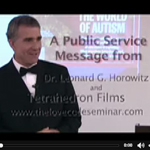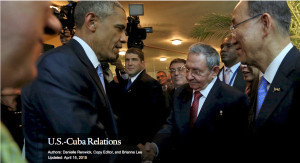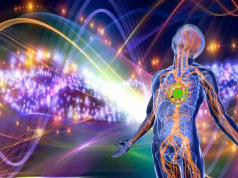Breakthrough in U.S.-Cuba Relations Encourages a Brighter Future for Natural Healing Making Medicinal Music in 528Hz
Foreword by Dr. Leonard G. Horowitz
author of The Book of 528: Prosperity Key of Love, creating a worldwide revolution in the music industry, music therapy, and natural healing.
 I am excited and honored to share innovations that Cuban researchers have advanced in the field of music therapy, certain that 528Hz frequency resonance will have a profound impact in increasing the efficacy of any music used successfully to combat every illness for a brighter future in healthcare.
I am excited and honored to share innovations that Cuban researchers have advanced in the field of music therapy, certain that 528Hz frequency resonance will have a profound impact in increasing the efficacy of any music used successfully to combat every illness for a brighter future in healthcare.
The reason for my optimism is quite simple; albeit newly introduced in the complex worlds of electrogenetics and multipdisciplinary health science:
1) 528Hz is one of nature’s core creative frequencies, and apparently most harmonious among nine pure tones that musically/mathematically comprise the matrix by which the entire universe (or creation) is administered.
2) Health and vitality is a function energy, and all energy, universally, sources from electro-resonance; and electro-resonance is function of both electro-magnetism, largely dependent upon the spin by which electrons gravitate around the atomic nucleus of elements comprising the chemistry of life and creation. This is the frequency by which electrons vibrate on whatever orbital level they are moving. According to commons sense applied to this biophysics, and old and new discoveries in musical-mathematics and sacred geometrics, this is the most exciting breakthrough in medical history.
In other words, if you lose your health and vitality, the only way to restore it is through the administration of electrons resonating in harmony with nature. No matter what medicines you take, or vaccines you administer, all the healing that occurs in your body results most proximally to piezoelectricity based on frequency harmonics.
3) Piezoelecricity is the motivating force of everything moving in life, time, and space. And since water, in its different states, forms the medium in which creation manifests, and that simple molecule–H2O–sources all of the oxidation-reduction reactions central to physiology and metabolism, it is a “no-brainer” that body chemistry–alkalinity vs. acidity–plays a central role in the availability of body-energizing-electrons and piezoelectricity animating organic chemistry and biology.
4) Consequently, oxygen, produced by chlorophyll and ocean waves, obviously carries electrons resonating in harmony with the sacred geometry of H2O, carbon-6 organic chemistry, and hexagonal sacred geometry empirically-evidenced by snowflakes and buzzing bees that, incredibly, buzz at the frequency of 528Hz. Simply adding the numbers: 5 + 2 + 8 = 15, whereby 1 + 5 = 6, additionally evidences creationistic harmonics (and recreational entrainment, or “phase-locking” into the “good vibrations” of relaxation, peace, love, healing, and pure spirituality. (“LOVE” is, after all, the “universal healer;” and peaceful relaxation extinguishing psychological distress, body chemistry acidification (energy depletion) and ill-health; and
5) It just so happens that chlorophyll vibrates at the heart of the electromagnetic color spectrum (i.e., the light energy spectrum extinguishing darkness) at 528nm. This is the color reflecting most abundantly into the windows of your soul as you commune with nature. This is the color of grass, the most healing pigment greenish-yellow. It is also obvious that the “electrons of love” popping out of leaves and off of oxygen in biological systems, produced by chlorophyll (that is structurally identical to hemoglobin except for iron in humans replacing magnesium in plants) resonates at 528nm–the source of the electron’s piezo-electricity, and energizing power.
Accordingly, we have good cause to celebrate, theorize, research, and develop new products in health commerce based on this extraordinary association of (or correspondence between) 528Hz frequency of sound, and 528nm of light, and also apply this knowledge in clinical practice to help heal every illness most naturally and inexpensively.
Consequently, I celebrate the research and therapeutic developments of our colleagues in Cuba, and am grateful that previous political prohibitions between purportedly capitalist vs. communist nations are easing, as being reported in the news.
Leonard G. Horowitz, D.M.D., M.A., M.P.H., D.N.M. (hon.), D.M.M. (hon.)
Dr. Horowitz, the author of 17 books, 5 documentary films, and dozens of scientific articles in health science is also a certified Ambassador and Public Minister serving the Canadian Priory, Sovereign Order of Orthodox Knights Hospitaller of Saint John of Jerusalem, Russian Grand Priory, and the house of Romanov Protectorate, apostilled by the U.S. Department of Foreign Affairs, Trade and Development Canada. Dr. Horowitz also serves as Editor-in-Chief of Medical Veritas Journal Online, and is the co-developer of OxySilver, a broad spectrum anti-microbial that resonates in 528Hz frequency, and is the first nutraceutical designed to be used with “prayer-power” to accommodate heart-felt loving intention to heal and remain healthy.
Introduction
Almost as a natural consequence of the foundation of the Latin American Federation of Music Therapy, created in Rio de Janeiro in 1990 and confirmed as the Latin American Association in 1993 in Vittoria Gastéis, the Training Group of Cuban Music Therapists, that had informally gathered in 1988, was formally established. When we refer to the background of our specialty however, we must highlight the work of the psychologist Rafael Alvisa Lastra. He followed the principles of French Rambonsson and Russian Béjterev and used some pre-recorded musical selections according to certain moods in patients of the Endocrinology Institute of La Habana (compiled, among others, in: Fernández, T; Hidalgo Gato, A; Fiallo, J. & Alvisa, R. (1992). La musicoterapia como moduladora de la actividad cerebral [Music Therapy as a Modulator of the Brain Activity], La Habana: Academy of Sciences of Cuba). He also used other original musical selections with subliminal purpose in a treatment with the collaboration of musicologist Juan Blanco.
Together with other researchers from the Institute of Fundamental Brain Investigation and the Centre for Research and Development of Cuban Music, Rafael Alvisa Lastra created a place for relaxing auditory applications in the Worker’s Prophylactic Centre of the Ministry of Basic Industry (a rest centre with multiple options for high risk workers). These kind of musical selections are still applied with a similar aim, combined with hydrotherapy and in treatments for induction of sleep, at the Topes de Collantes’ Relaxation and Rehabilitation Centre.
Among other examples of how music with therapeutic purposes has been present along the medical history of the country, we can mention its application as a parallel treatment option for asthmatic children, developed by the psychologist Orlando Licea, with the participation of the musician Frank Fernández. Musicologist Hidalgo-Gato quotes previous references (Clave Journal, in press) and refers to its use in the ’60s by the psychiatrist Gali García, PhD and a group of musicians at the Day Hospital Calixto García, and also by the psychiatrist Armando Córdova, the psychologist Elena Iglesias at the Piti Fajardo Hospital (from 1969 to 1975), and Dr. Armando Chang at the beginning of 1970 at the Camagüey Psychiatric Hospital.
Even if we go more than five decades back, we could point out the work of the gynaecologist Lajoncherie who appealed to the application of musical parts like Maurice Ravel’s “Bolero” to semi-hypnotize his pregnant patients in order to achieve a greater state of relaxation during childbirth. In this trip with a time machine we could reach the oldest Cuban treatise about the use of music for healing: 1898’s “Indicaciones terapéuticas de la música” [Therapeutic Indications of Music], by Cuban doctor Antonio de Gordon y de Acosta.
The First Music Therapy Laboratory
After going through training in different institutions under the supervision of Dr Rolando Benenzon in Buenos Aires, and a course at the Rio de Janeiro Music Conservatory with the direction of Cecilia Conde, the author (Dr Teresa Fernández: teresaf@colef.mx) worked to consolidate the Group of Cuban Music Therapists, with base on the Music Therapy Laboratory of the Academy of Sciences’ Centre of Fundamental Brain Investigations. The Group enrolled specialists of varied disciplines such as the musicologists Lic. Rosado and Master Jorge Fiallo, neurophyisiologist Master Trinidad Virués and the also neuropsychologist Dr Néstor Pérez Lache, piano professor and music teacher Marielena Cordeiro, psychologists Carmen Verdes, Lourdes Presmanes, Marielena Alvarez, Vivian López and Máximo Hernández,MD and social workers Nivia Fuerte, Mirtha Cádiz and Lorgia Carrión, among others, which is reflected in the publications derived from the shared experiences presented below.
Publications
Neurology and Music:
This was the most developed field in the beginning:
- Validation of the cortical sedative effects of Music Therapy auditions in hospitalised anxiety patients, following the ISO parameters with the objective of diminish drug administration in hospitals (published in Fernández, Teresa; Adrián, Jose & Virués, Trinidad (1995). Efectos de la música ansiogénica y ansiolítica sobre la actividad eléctrica cerebral de alfa en sujetos con ansiedad patológica [Anxiogenic and Anxiolythic Music Effects on the Electrical Brain Alpha Activity in Subjects with Pathologic Anxiety]. Rev. Aprendizaje, Estudios de Psicología. Spain).
- Relationships between manual and auditory laterality and the state of relaxation, after McFarland’s research over pre-selected music (published in: Fernández, Teresa; Cadiz, Mirtha & Fajardo, Regla (2000). Lateralidad manual y música relajante [Manual Laterality and Relaxing Music]. Rev. Psicologia y Salud Veracruz: Mexico).
- Corroboration of the validity of prointellective parameters, described by Sheila Ostrander et al, by a novel method of cortical measurement, for their further use in education (see: Fernández, Teresa ; Cádiz, Mirta & Lache, Néstor Perez (1998) Esteseometría y música prointelectiva [Esthesiometry and prointellective music]. Rev. Música, Arte y Proceso. Spain).
- Description of the theoretical and neuropsychological foundings of the Brain-music relationship. Group work in consultation with other sources: (in: Fernández de Juan, Teresa (1996) Musicoterapia y lateralidad: Un estudio teórico [Music Therapy and Laterality: a Theoretical Study]. Rev. Música, Arte y Proceso Spain).
- Fernández, Teresa; Hidalgo-Gato, Alfredo; Fiallo, Jorge; & Alvisa, Rafael (1994). La musicoterapia como moduladora de la actividad cerebral [Music Therapy as a Modulator of Brain Activity]. Cuban Academy of Sciences.
About Diverse Treatments:
These refer to different applications developed in hospitals and educational centres (that are, as it is widely known, free of charge in Cuba) as validation of the method in each case for further applications. They were presented in La Habana in the Second Conference INTERMOZG, 1994, so they were compiled and published in the book Physiopathology of Nervous System Proceedings, edited by the Cuban Academy of Sciences:
- Fernández, Teresa; Díaz, Eloína; Cádiz, Mirta & Fajardo, Regla (1994).Psycho-physiological Experiences of the Sedative Effect of Musical Fragments.
- Verdes, Ma. Carmen & Fernández, Teresa (1994). Application of a Music Therapy Program in Chronic Failure Patients Undergoing Haemodialysis Treatment.
- Alvarez, Marianela; Cordeiro, Marielena & Fernández, Teresa (1994) Experimental Application of Active Music Therapeutic Techniques in a Sample of Behaviourally-disordered Children.
- Presmanes, Lourdes & Fernández, Teresa (1994) Psycho-ballet and Music Therapy.
- Fernández, Teresa; Hernández, Nibaldo; Figueredo, Pedro; Virués, Trinidad & Carrión, Lorgia (1994). Spectral Study of the Cerebral Electric Activity in Normal Subjects in Front of Anxiogenic and Anxiolythic Auditions.
Approach to Foreign Specialists:
The Psychology School of the University of La Habana had the chance of hearing a series of Music Therapy lectures by the Argentine Music Therapist Diego Schapira, almost a decade ago. In the present, the educational system has had workshops by Music Therapist Mónica Papalia, also from Argentina.
With respect to the current lines, that count with new constituents and thus, with changes in the topics, we can highlight:
- Music Therapy work with the elderly mainly developed by the general physician and art therapist Rigoberto Oliva Sánchez. He previously made some work in art therapy with children (ccsmr@infomed.sld.cu). The first module was developed in Regla’s House of Culture and aimed to change their psychic mood, increase their communicational status and validate the treatment through: singing, dance therapy, Schulz’s relaxing techniques with musical background, guided imagery technique, musical audition with artistic modalities and musical improvisation, and the use of typically Cuban music and musical instruments, as are the songs of Benny Moré and the instrumental compositions of Ernesto Lecuona, (auditions are attached). (For further data, please consult: Rigoberto Oliva and Teresa Fernández (2003) La musicoterapia en los gerontes: Una alternativa de salud [Music Therapy in the Elderly: a Health Choice]. Rev. Psicología y Salud, Vol 13, 2003. México.)Dr Rigoberto, with the support of the Centre’s Director, psychiatrist Dr Gil, is carrying on a new research project on this line involving the same age group in Regla’s Community Centre. He is exploring, through different assessment tests, the elimination of depression and comparing the application of the previously mentioned techniques in another group of patients, while working with control groups at the same time, some of them with no intervention and others under treatment with activities such as handicraft and theatre treatment.
- Considering the close relationship between soma and psyche, and the favouring effect of music on both of them, the Medical consultant of the International School of Cinema and Television of San Antonio de los Baños Dr. Máximo Hernández (also Coordinator of Alternative Treatments in Cuba) (maximo@eictv.org.cu) has developed a multidisciplinary therapeutic system that includes massage, vibrations, electro-acupuncture, electro-sleep, chromo therapy and moxibustion (a technique used in traditional Chinese medicine). This study was first conducted in 60 patients of different nationalities and varied musical interests; they were analysed and taken into account to determine optimal sedation.Dr Máximo actually continues with this line of work combined with new alternative approaches, such as a novel technique of harmonization of the charkas through well-chosen musical selections whose sounds vary according to the energetic state, the application of colours with a 150 watt spotlight and digit-puncture with speed adjustment to the injury or illness. (presented by Dr Hernández in the Alternative Techniques event in Varadero, Cuba, 2003)
- With the exception of some more investigational and associated to Musicology aspects -as the research about some aspects of tonal deafness and about music receptivity of the non-professional listener by Master Jorge Fiallo Salazar (jfiallosal@yahoo.com)-, in the rest of the institutions where it is applied it can be assessed basically the continuity of its passive pattern, with the audition of musical selections already validated to contribute to the elimination of depression and anxiety.There are further examples of this work in Marianao’s Traditional Medicine Centre, Santiago de las Vegas’ Traditional Medicine Rehabilitation Centre, 26 y Boyeros Hospital Psychiatry Department and DTE’s Music Therapy Department, and also at San Antonio de los Baños Cathedra of Traditional Medicine, headed by Dr Máximo (maximo@infomed.sld.cu); in all cases they try to go ahead despite the financial, theoretical and specially material difficulties, including the fact that in some institutions many therapeutic approaches have been abolished for not being considered priorities.
- It is important to point out that there is no specialty, diplomat or degree course on Music Therapy available in Cuba. Regarding this, the author has planned to develop a brief theoretical-practical course for the beginning of next year (due to her personal interest and the collective one expressed during the previous design with two hospital and educational centres), and a series of conferences about a personal current project: Music Therapy techniques for groups of women with conjugal abuse and low self-esteem, (teresaf@colef.mx), still in the commencement phase. This last project will be validated in community groups of Baja California. Even though all of these efforts only cover part of the expectations for the profession in the future, they prove the effects of this art turned into science that still favourably reflects in the work and the desires of many professionals of the country.
Samples of Music Used in Music Therapy
This text has auditions of two cuban composers, Benny Moré and Ernesto Lecuona attached. Their musical selections have been used in several sessions and are still part of the sonorous bagagge for the work with the elderly.
Benny Moré: Siempre en mi corazon.mp3 (2,18 Mb) (Could be improved by free transposition of the recording in 528Hz on 528Records.com)
Ernesto Lecuona: Como Fue.mp3 (2,68Mb) (Likewise, could be improved by free transposition of the recording in 528Hz on 528Records.com)
How to cite this page
Fernandez de Juan, Teresa (2003). Music Therapy in Cuba: A Brief Journey to the Immediate Future. Voices Resources. Retrieved January 09, 2015, from http://testvoices.uib.no/community/?q=country-of-the-month/2003-music-therapy-cuba-brief-journey-immediate-future
Moderated discussion
These discussions are no longer supported. If you have comments to articles in the Voices journal, please register yourself at < href=”http://www.voices.no”>www.voices.no Then you can leave comments on all the published articles









